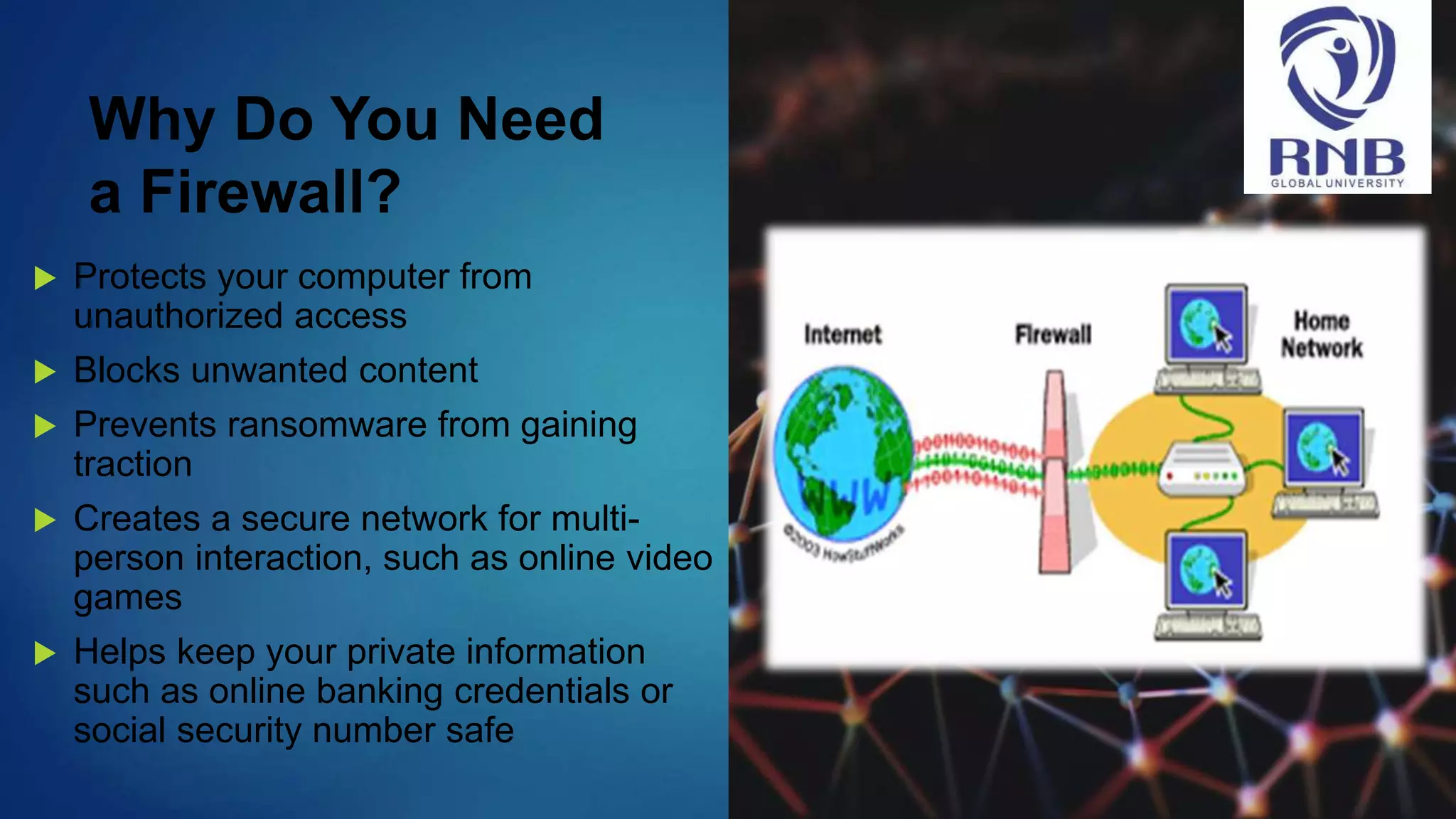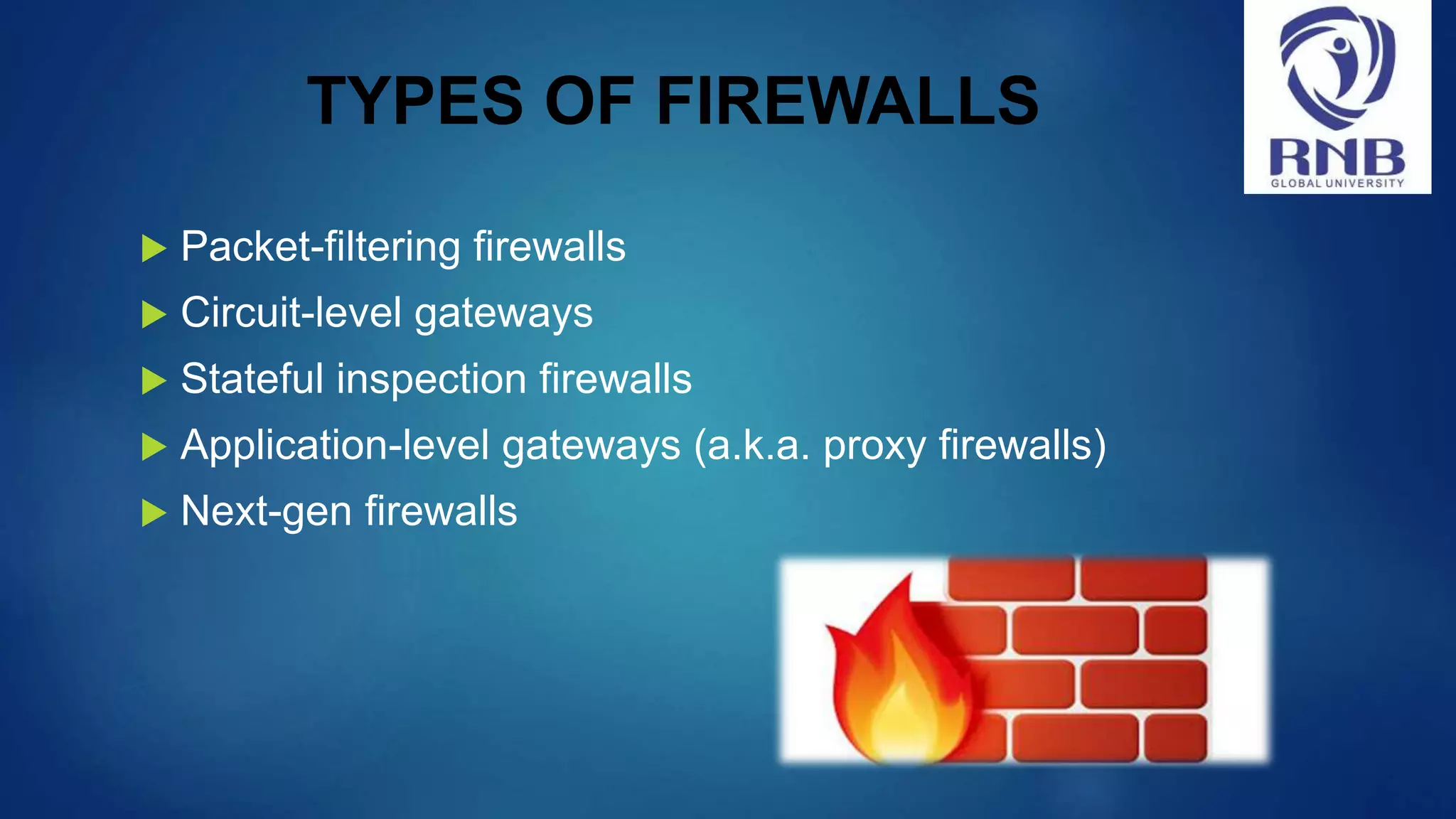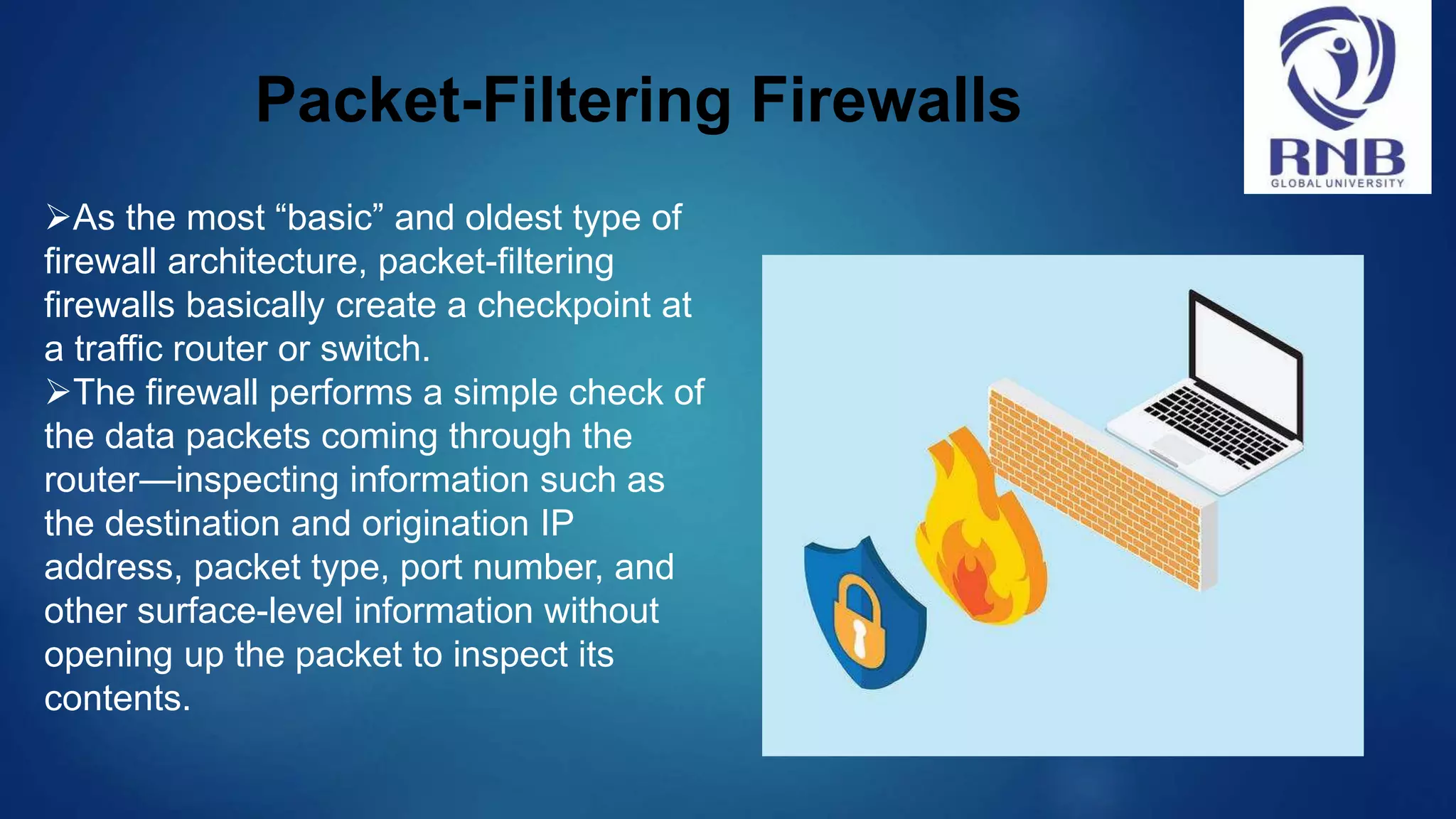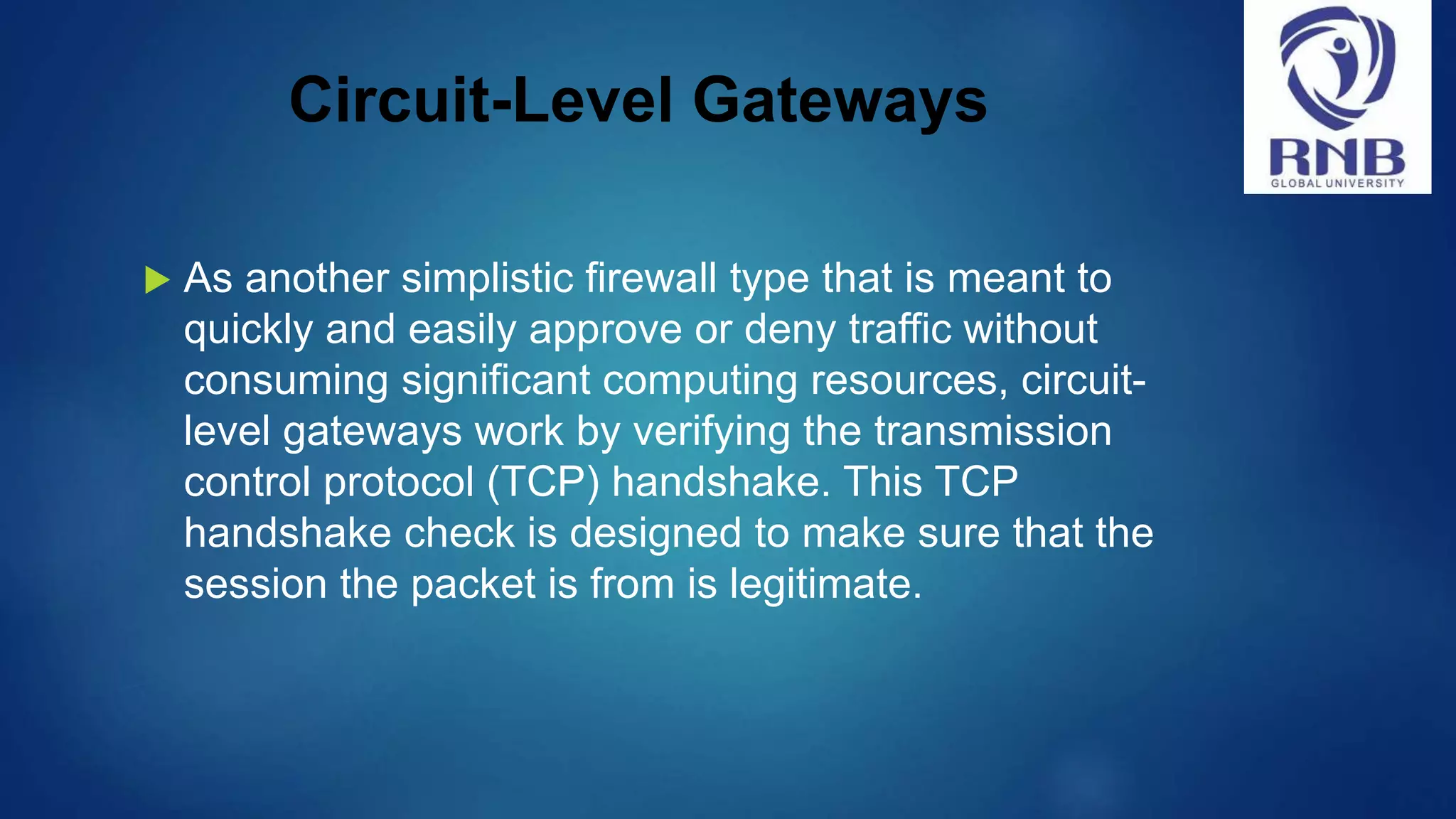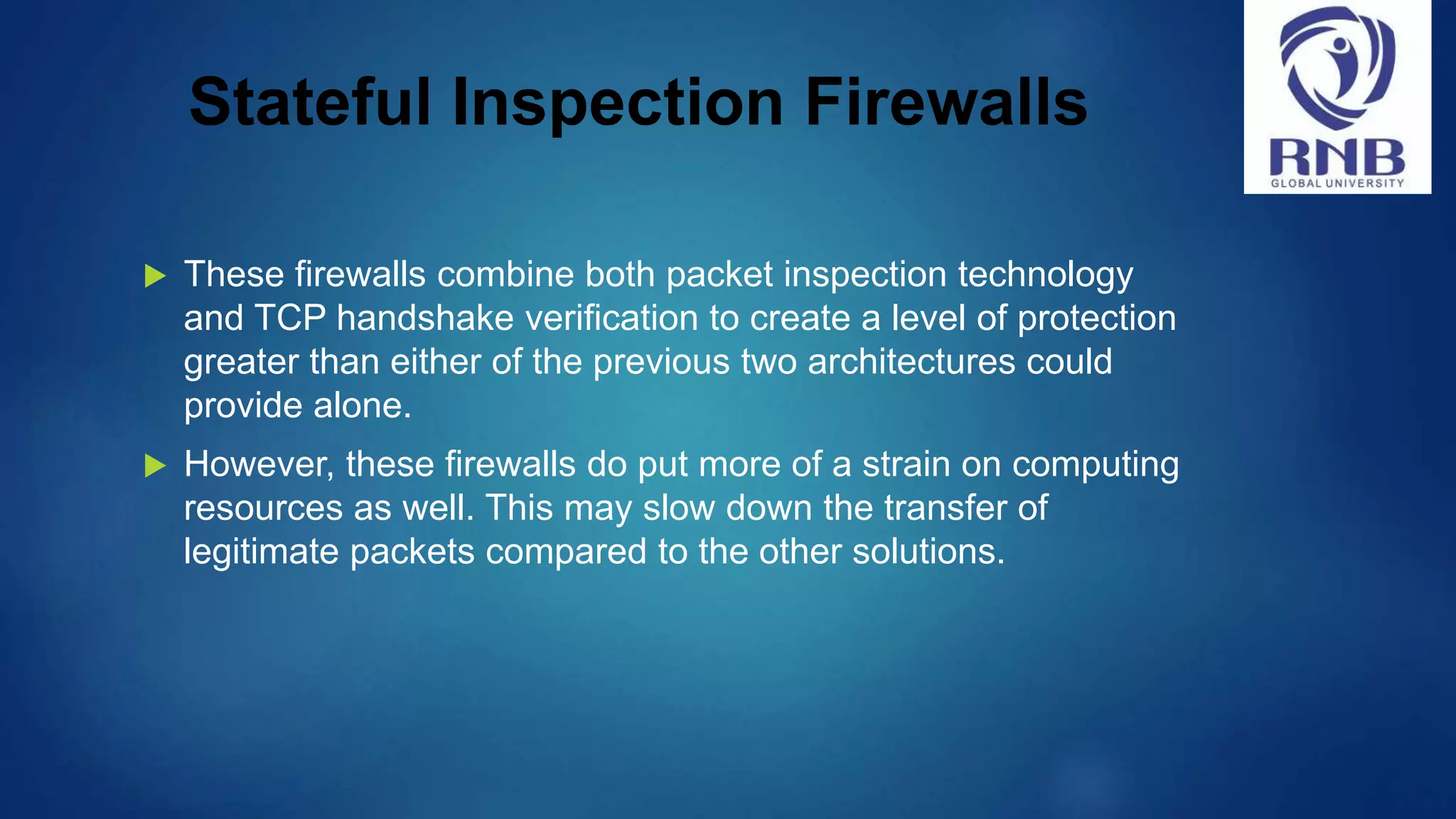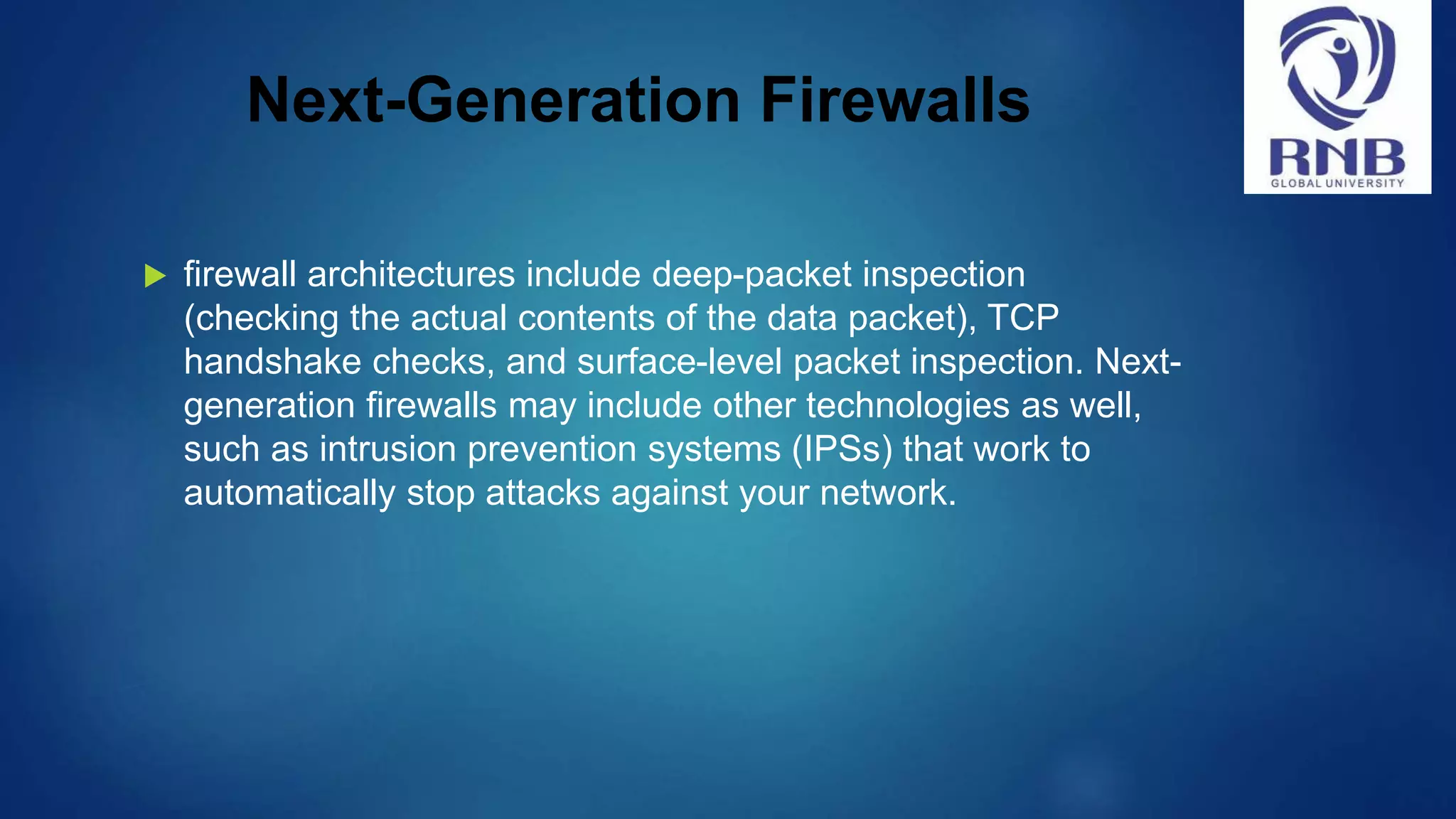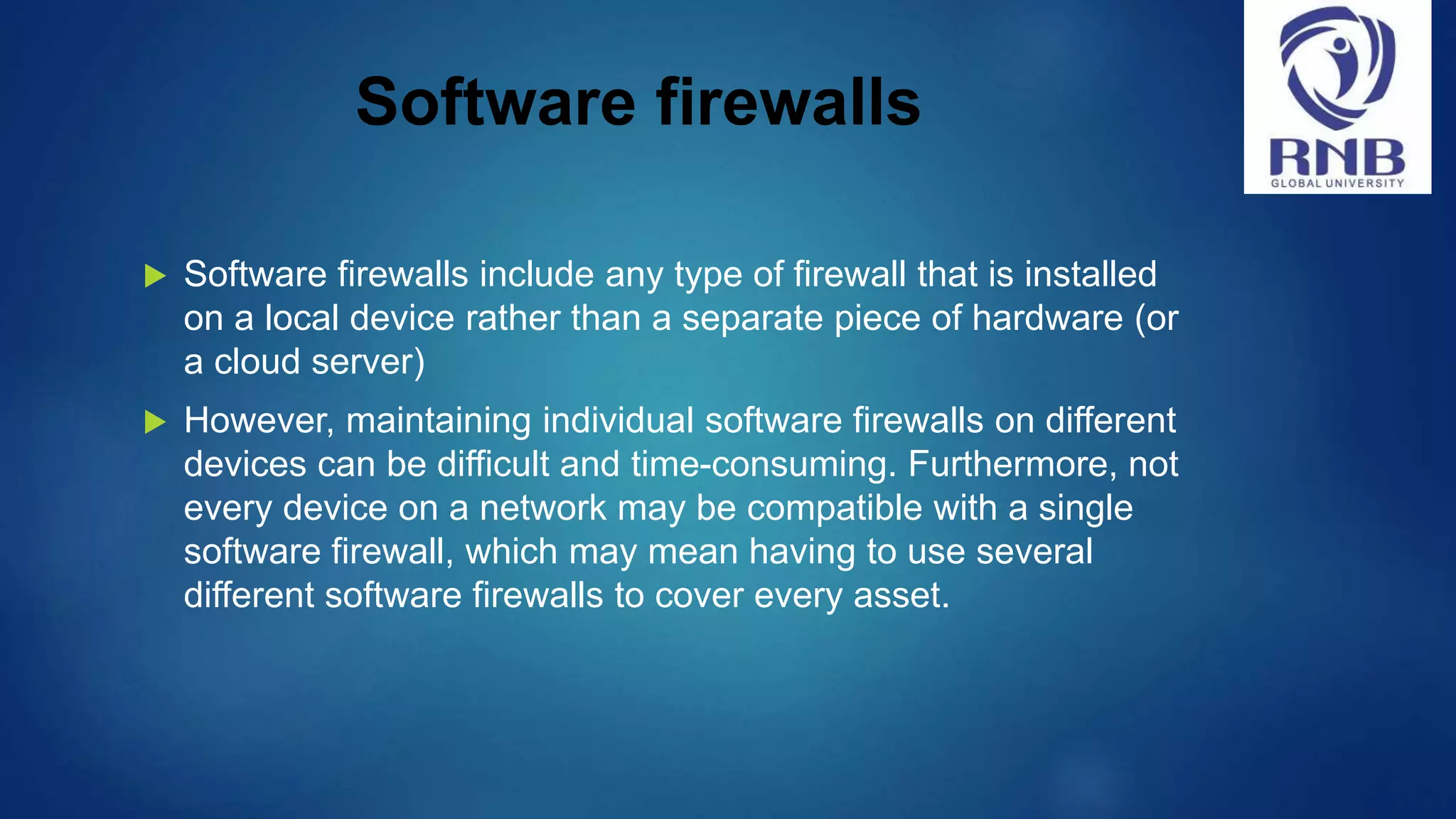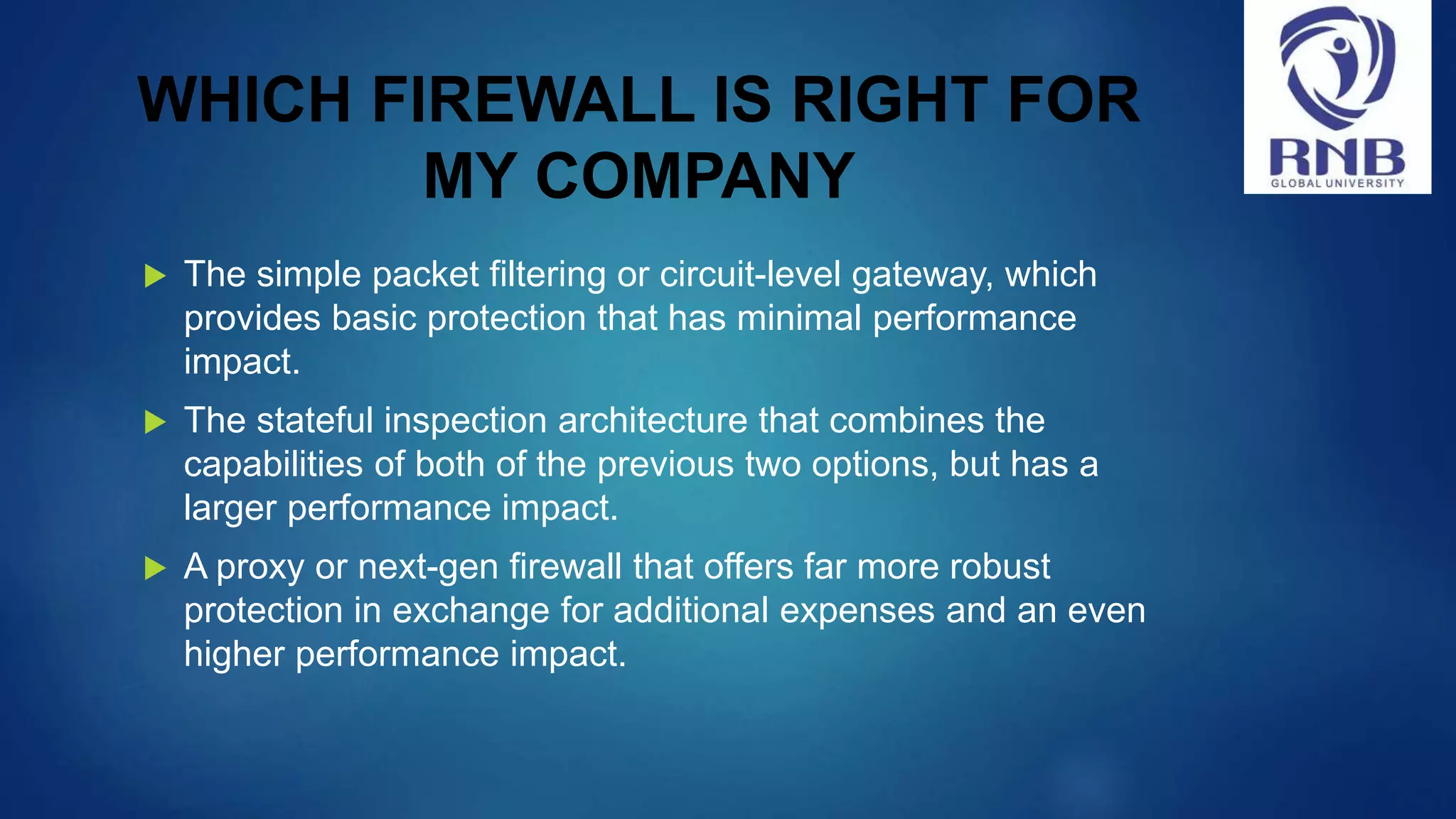This document discusses firewall security in computer networks. It begins by asking what a firewall is, why you need one, and the types and methods of delivering firewalls. It then defines a firewall as a tool that filters network traffic and separates nodes. Firewalls are used to protect devices from unauthorized access and malware while allowing legitimate use. The document outlines the main types of firewalls as packet filtering, circuit gateways, stateful inspection, and proxy firewalls. It also discusses software, hardware, and cloud methods of firewall delivery. In the end, it recommends considering network needs and the performance impact of basic versus more advanced firewall options.



